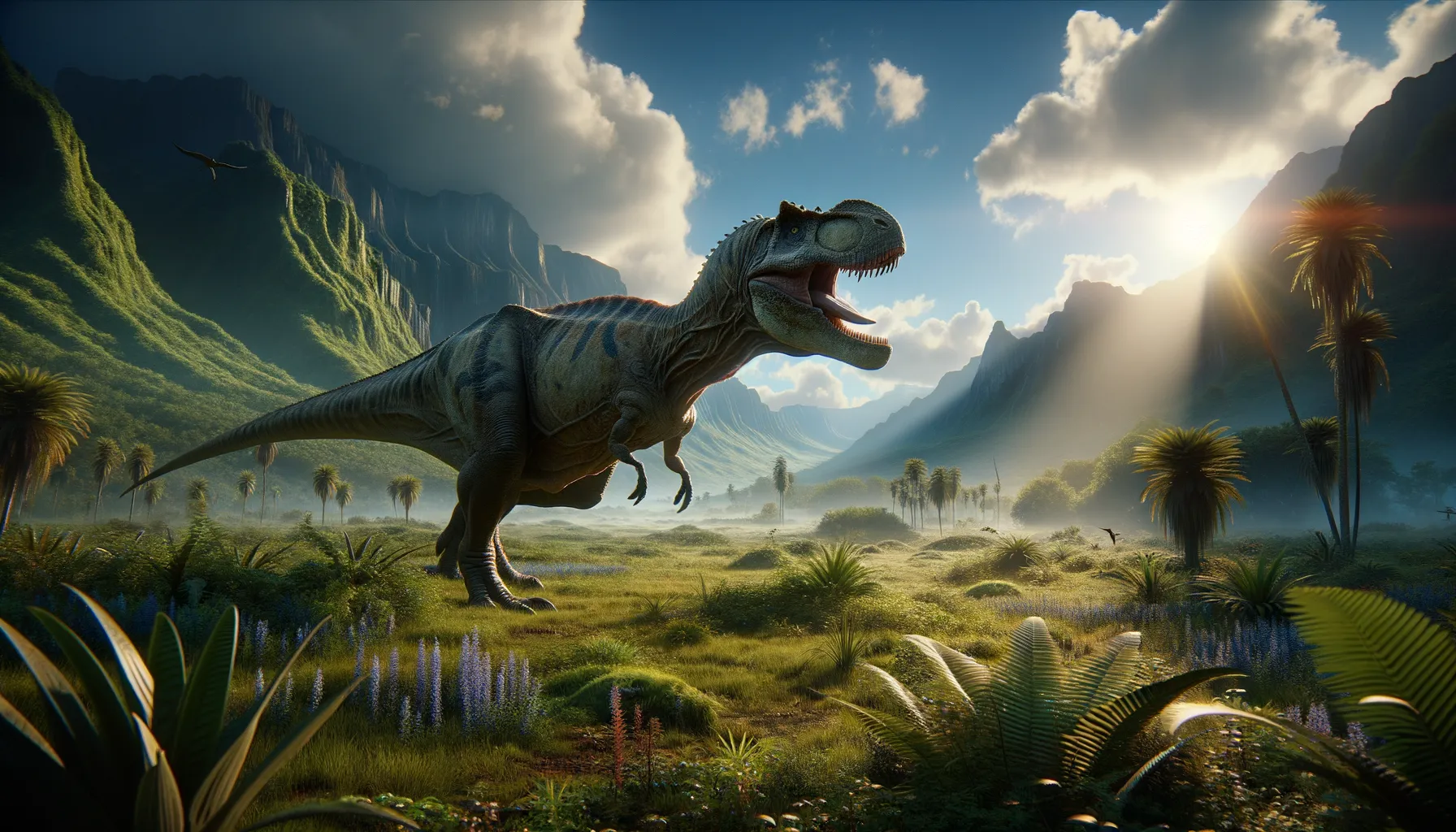
Parrosaurus
The gentle giant of the Midwest.
Period
Cretaceous
Length
About 10 to 12 meters long.
Height
Around 4 to 5 meters at the shoulders.
Weight
Approximately 2 to 3 tons.
Parrosaurus was a large, herbivorous dinosaur known for its impressive size and unique physical traits. It roamed the lush landscapes of the Cretaceous period, interacting with various species in complex ecosystems. Fossil discoveries primarily in Missouri, USA, have provided valuable insights into its life and environment, painting a picture of a gentle giant that faced numerous prehistoric challenges.
Diet
Parrosaurus was herbivorous, feeding primarily on the diverse plant life available during the Cretaceous period. It likely consumed large quantities of vegetation, including leaves, ferns, and possibly fruits.
Hunting
Being a herbivore, Parrosaurus did not engage in hunting behaviors. Instead, it foraged for plants within its habitat, using its size and reach to access various types of vegetation.
Environmental challenges
Parrosaurus faced environmental challenges such as changes in climate that could affect food availability. It also had to deal with natural predators and competition with other herbivores for resources. Environmental shifts in the Cretaceous period, such as volcanic activity, could have impacted its habitat.
Speed
Moderate, likely adapted for steady movement.
Lifespan
Estimated around 20 to 30 years.
First discovery
Discovered in Missouri, USA in the 1940s.
Fun Facts
- Parrosaurus was a type of duck-billed dinosaur, known scientifically as a hadrosaurid, that lived during the Late Cretaceous period.
- Fossils of Parrosaurus have been primarily found in North America, particularly in the Midwest region of the United States.
- Parrosaurus had a flat, duck-bill-shaped snout, which it used to eat plants, especially tough vegetation.
- This dinosaur could walk on both two and four legs, which allowed it to reach higher plants and stay balanced when moving quickly.
- Parrosaurus lived in a lush, forested environment full of other fascinating creatures, including other dinosaurs.
- Its fossils were initially discovered in the 1940s, but it took several decades before Parrosaurus was recognized as a unique species.
- Despite its ancient origins, Parrosaurus became Missouri's State Dinosaur in 2004, showcasing its ties to the region.
Growth and Development
Parrosaurus hatched from eggs, growing rapidly in its juvenile stages to survive in a world filled with predators. Its growth rate would slow as it reached maturity, requiring vast amounts of food to sustain its massive size. Fossil evidence suggests it had strong limbs and a robust body to support its massive structure throughout its life.
Habitat
Parrosaurus inhabited lush, forested areas and floodplains that provided abundant vegetation. These environments supported its herbivorous diet and offered protection from predators. The warm, humid climate of the late Cretaceous period created ideal living conditions for Parrosaurus and numerous other species it coexisted with.
Interaction with other species
Parrosaurus shared its environment with other dinosaurs, likely forming herds for protection against predators. It competed with other herbivores for plant resources, and its presence affected the structure of local plant communities. Predatory dinosaurs may have posed a threat, necessitating social behaviors or defensive strategies.
Natural lifespan
Parrosaurus lived naturally for about 20 to 30 years.
Reproduction
Reproduction involved laying eggs, likely in a communal nesting ground to increase survival rates. Parental care may have included guarding nests against predators. The incubation period and hatching process were critical times for the survival of the next generation.
Social behaviour
Parrosaurus might have been a social creature, moving in groups or herds for protection and communal feeding. Herd structures possibly included complex social hierarchies, which influenced foraging and migration behaviors. Communication would have been essential, possibly using vocalizations or physical signals.
Fossil locations
Fossils of Parrosaurus have been found primarily in Missouri, USA. The discoveries from this region have given significant insights into its size, diet, and living conditions. These fossils are crucial to understanding the ecology of the Cretaceous period in North America.
